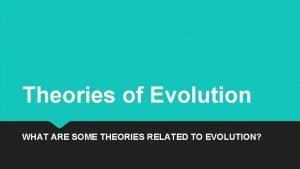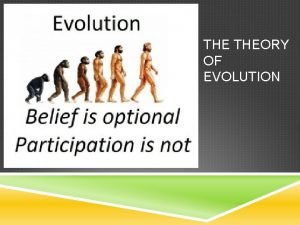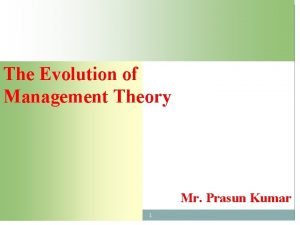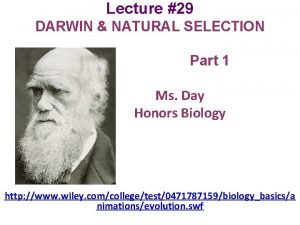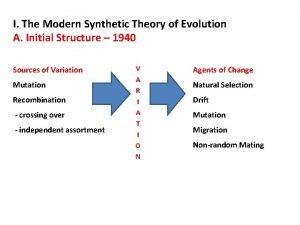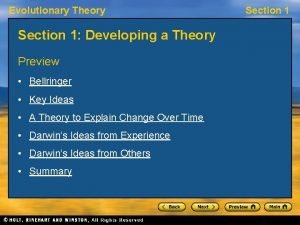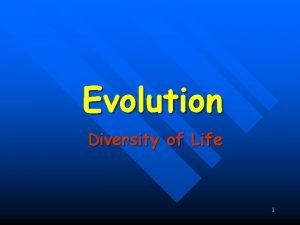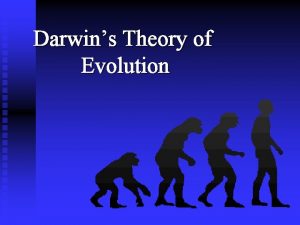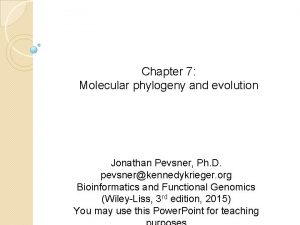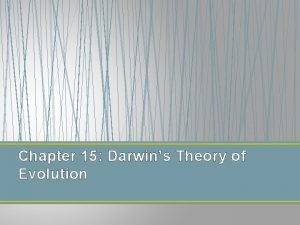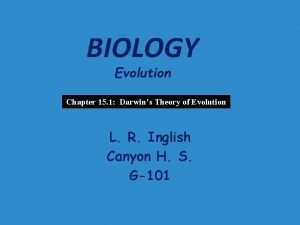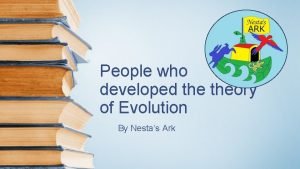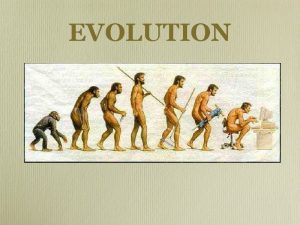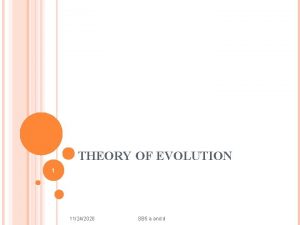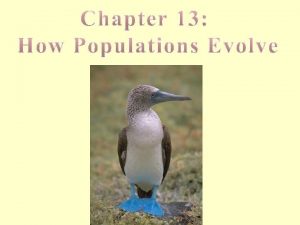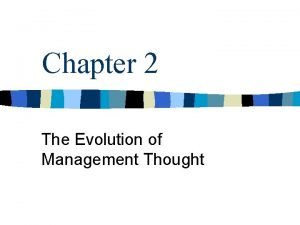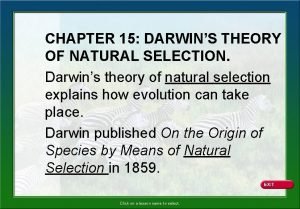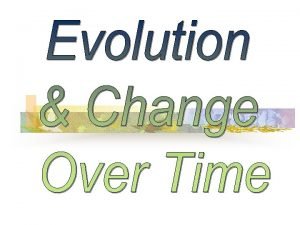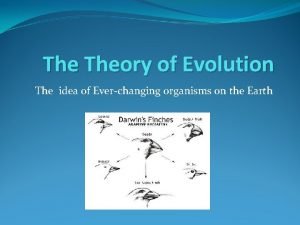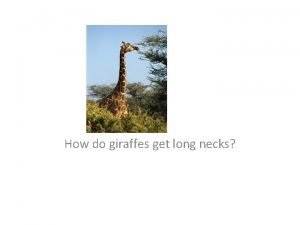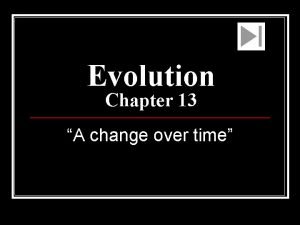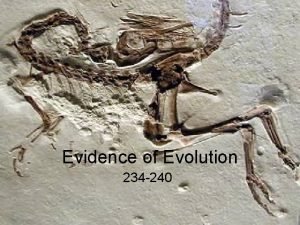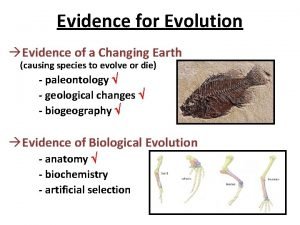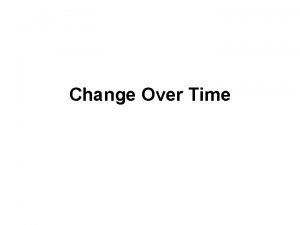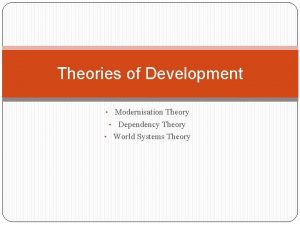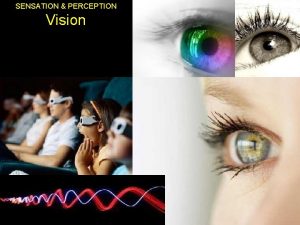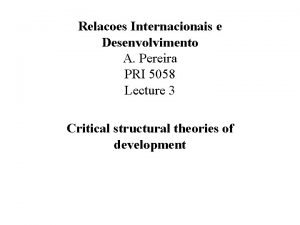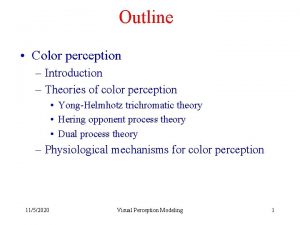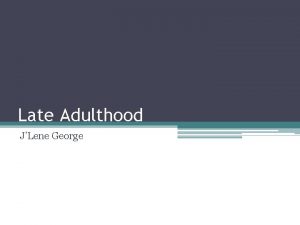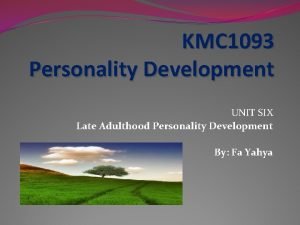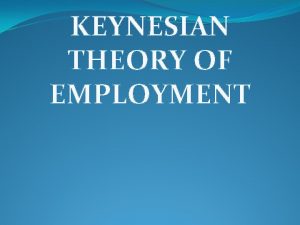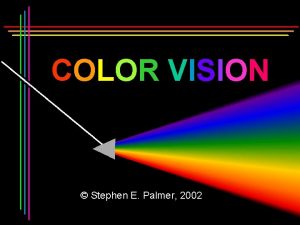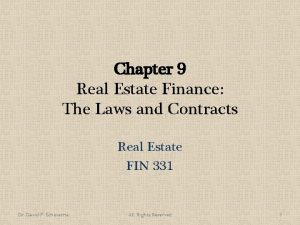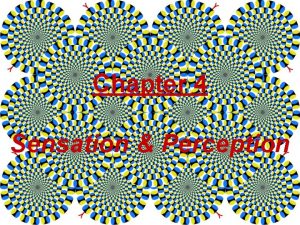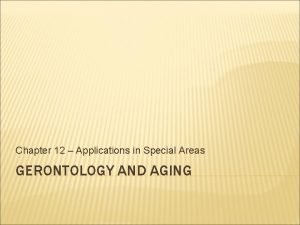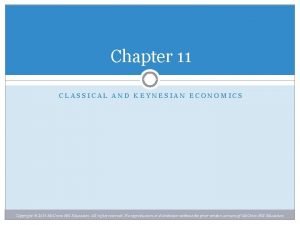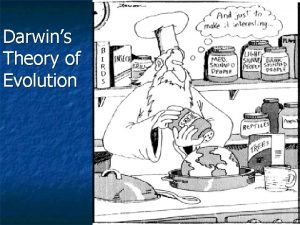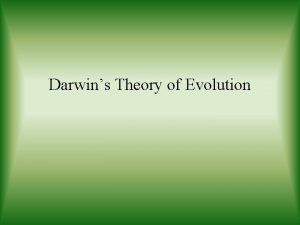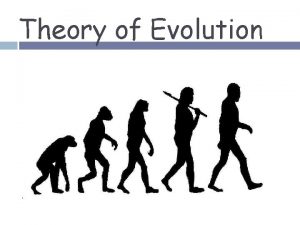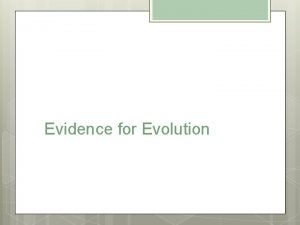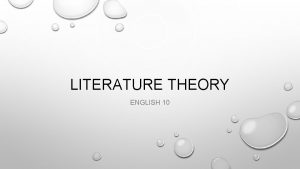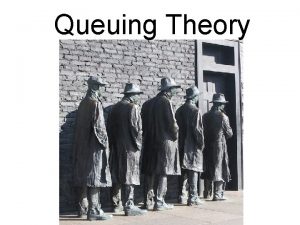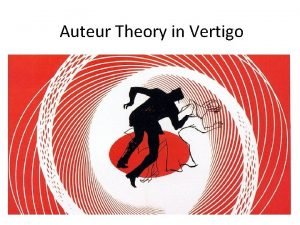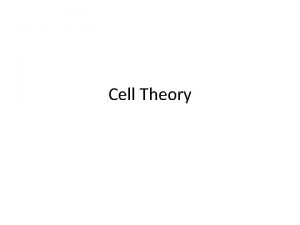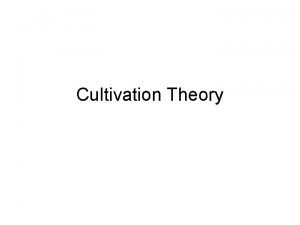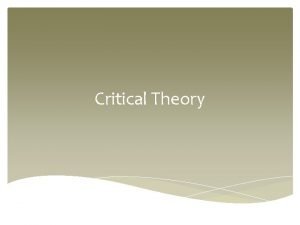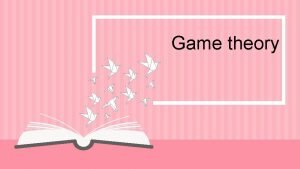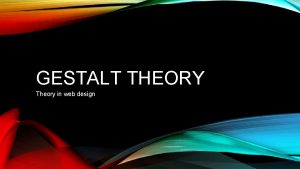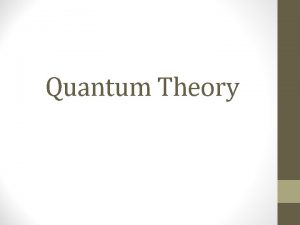Theory of Evolution Ch 15 15 1 Evolution
















































- Slides: 48

Theory of Evolution Ch. 15

(15 -1) Evolution • Change of organisms over generations w/ a strong natural modification process • “Change over time”

Scientific Theories • Explain data • Generations of predictions • Falsifiable


Lamarck’s Theory • Use & Disuse: parts of body that are used extensively become larger & stronger while those that are not used deteriorate – Acquired traits

Lamarck (cont. ) • Ex: – Webbed foot = stretching of membrane b/w toes (water birds) • 1 st to say: – Organisms change over time – New organisms are modified descendants of older types


Darwin & Wallace’s Theory • Natural Selection: organisms best suited to their environment reproduce more successfully than others • “Survival of the fittest”

Charles Darwin’s • Voyage on the Beagle

Darwin’s Studying Ground

Darwin’s Observations • 13 similar but separate species of finches – Specialized for food • Similarities lead to belief of a common ancestor

Darwin’s Conclusions 1. Descent w/ modification 2. Modification by natural selection

Descent w/ Modification • Newer species are modified descendants of older species • All species descended from 1 of a few original types of life

Modification by Natural Selection • How evolution occurs • Environment limits pop. ’s growth • Not all individuals in a pop. are identical & environment affects them differently

Natural Selection (cont. ) • Individuals w/ favorable traits reproduce more often than those w/ unfavorable traits • Thus favorable traits will be passed down more often

Adaptation • Inherited trait that inc. an organism’s chance of survival in a particular environment – Based on genes

Fitness • Ability to survive to propagate their genes (have babies)

Lamarck vs. Darwin



(15 -2) Evidence of Evolution 1. Biogeography • Geographical distribution of species 2. Fossil Record • Type & order of fossils

Evidence (cont. ) 3. Homologous structures • Similar b/c of common ancestry 4. Comparative embryology • Study of structures that appear during embryonic development 5. Molecular biology • DNA & proteins

Biogeography • New organisms arise in same geographic area where similar forms already lived • Ex: kangaroos only in Australia

Fossil Record • Fossils: impressions of organisms from the past mineralized in rock • Links b/w modern forms & ancestors

Distribution of Fossils • Law of superposition: lowest layers of rock are oldest • Fossil-bearing strata show when organisms became extinct • Mass extinction: brief period in which large #’s of species disappeared


Homologous Structures • May have different functions but have similar anatomy • Shows a common ancestor • Ex: bird beaks & forelimbs


Common Ancestor



Analogous Structures • Similar look & function, but different embryological development & anatomy • Ex: bird & insect wings

Vestigial Structure • Part of an organism w/ little or no function, but had a function in an ancestral species • Ex: human tailbone & appendix





Comparative Embryology • All vertebrate embryos go through a stage in which they have gill pouches & tails


Molecular Biology • The more similar the sequence, the more closely related 2 species are to each other • DNA, RNA, proteins (amino acids)

Amino Acid Chart

(15 -3) Patterns of Evolution 1. Coevolution 2. Convergent Evolution 3. Divergent Evolution • Pattern & speed result from changes in the environment

Coevolution • Change of 2 or more species in close association w/ each other • Ex: – Predator-prey – Parasite-host – Plant-animal pollinator

Convergent Evolution • Organisms appear to be similar but are not closely related • Environment selects similar phenotypes • Ex: shark & porpoise


Divergent Evolution • 2 or more related populations become more dissimilar in response to different habitats • Adaptive radiation – Galapagos finches • Artificial selection – Domestic dogs

Divergent evolution of Grand Canyon squirrels

Peppered Moth Evolution
 Lamarck's theory of evolution
Lamarck's theory of evolution What does the theory of evolution state
What does the theory of evolution state Evolution of management theory
Evolution of management theory What was lamarck's theory of evolution
What was lamarck's theory of evolution Synthetic theory
Synthetic theory Modern evolution theory
Modern evolution theory Lamarck’s theory of evolution.
Lamarck’s theory of evolution. Vestigial
Vestigial Chapter 15 darwin's theory of evolution
Chapter 15 darwin's theory of evolution Neutral theory of molecular evolution notes
Neutral theory of molecular evolution notes Chapter 17 darwins theory of evolution
Chapter 17 darwins theory of evolution Section 3 shaping evolutionary theory
Section 3 shaping evolutionary theory Chapter 15 darwin's theory of evolution section 15-1
Chapter 15 darwin's theory of evolution section 15-1 Homologous structures definition biology
Homologous structures definition biology Charles darwin theory of evolution
Charles darwin theory of evolution Theory of natural selection
Theory of natural selection Lamarck theory of evolution notes
Lamarck theory of evolution notes Theory of evolution
Theory of evolution Theory of evolution
Theory of evolution Evolution of management thoughts
Evolution of management thoughts Chapter 15 darwin's theory of evolution
Chapter 15 darwin's theory of evolution Homologous structures example
Homologous structures example Geographic isolation
Geographic isolation Lamarck theory of evolution notes
Lamarck theory of evolution notes Endosymbiont theory
Endosymbiont theory Convergent evolution
Convergent evolution The theory that evolution occurs slowly but steadily
The theory that evolution occurs slowly but steadily Lamarck's theory of evolution
Lamarck's theory of evolution The theory that evolution occurs slowly but steadily
The theory that evolution occurs slowly but steadily A remarkable turnaround case study
A remarkable turnaround case study Continental drift vs plate tectonics theory
Continental drift vs plate tectonics theory Dependency theory
Dependency theory Opponent process theory vs trichromatic theory
Opponent process theory vs trichromatic theory Criticism of dependency theory
Criticism of dependency theory Continental drift theory and plate tectonics theory
Continental drift theory and plate tectonics theory Dual-process theory
Dual-process theory Difference between classical theory and neoclassical theory
Difference between classical theory and neoclassical theory Motivation in group formation
Motivation in group formation Hawthorne motivation theory
Hawthorne motivation theory Continuity theory vs activity theory
Continuity theory vs activity theory Adulthood introduction
Adulthood introduction Explain the keynesian theory of employment
Explain the keynesian theory of employment Stephen e palmer
Stephen e palmer Rate theory of chromatography
Rate theory of chromatography Lien theory vs title theory
Lien theory vs title theory Opponent process theory vs trichromatic theory
Opponent process theory vs trichromatic theory Title theory and lien theory
Title theory and lien theory Continuity theory vs activity theory
Continuity theory vs activity theory Classical economics vs keynesian
Classical economics vs keynesian
